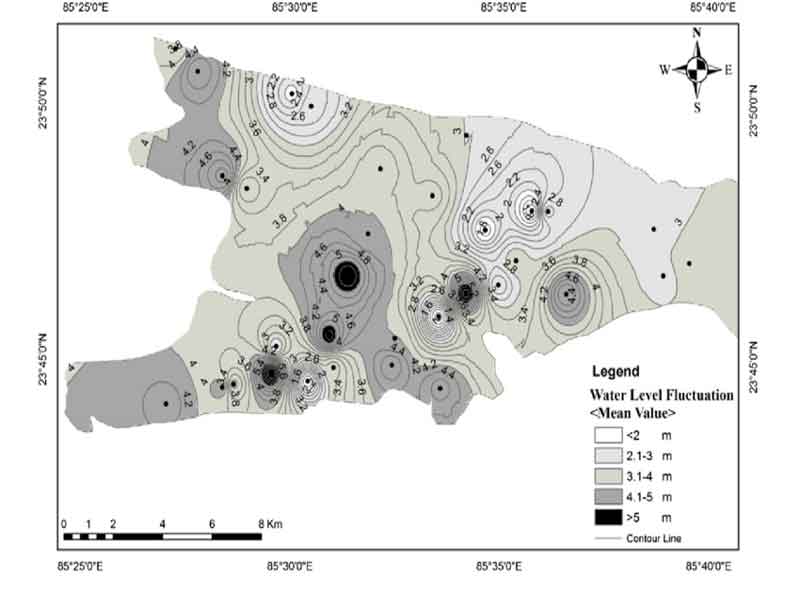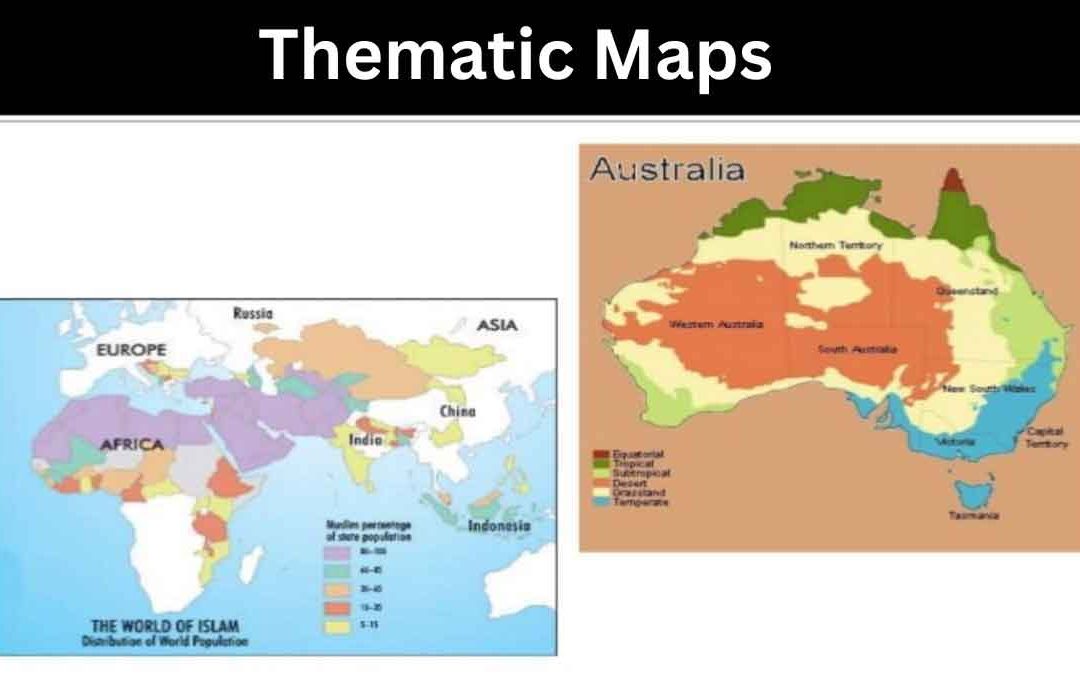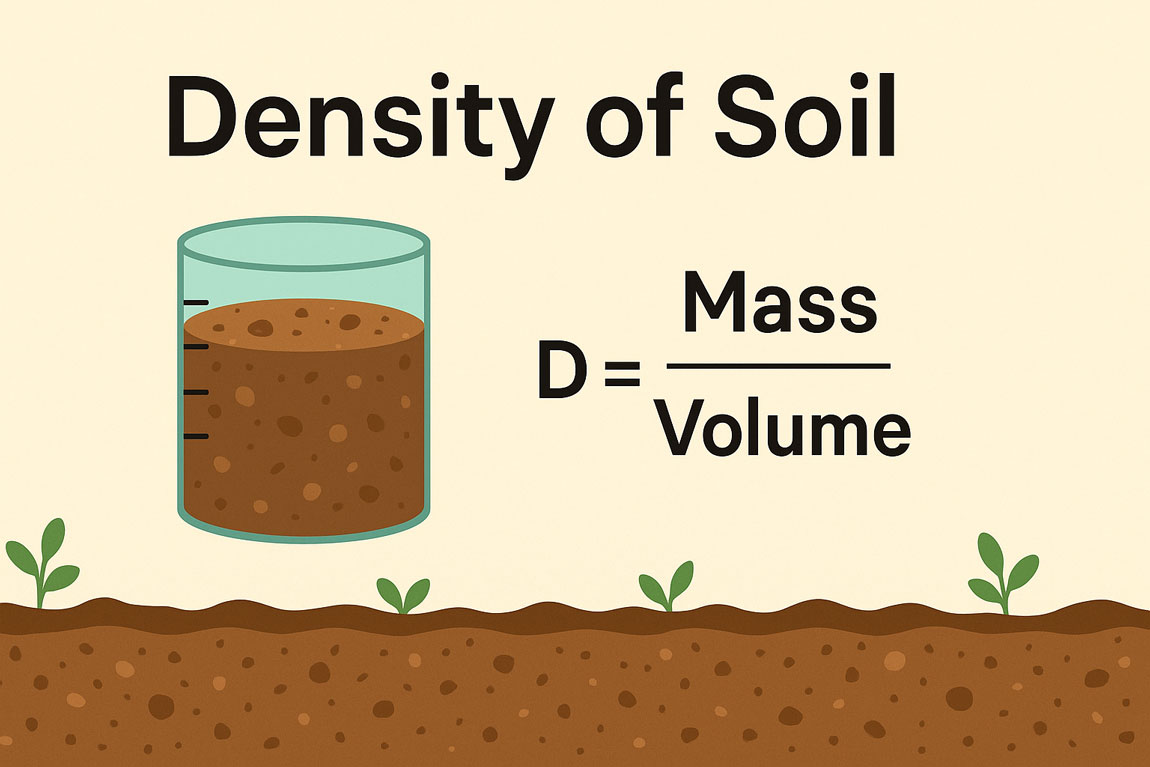Thematic maps present geographic data through visual techniques, allowing patterns, distributions, and relationships to emerge clearly. They effectively communicate complex spatial information using color, symbols, and density representations.
Types of Thematic Maps:
There are numerous ways thematic information can be portrayed over a geographic region.
Four primary thematic map types are,
- Choropleth maps,
- Graduated symbol maps,
- Dot density maps, and
- Isopleth maps.
Choropleth maps:
The Choropleth map offers a definite method of portraying ratios, densities, or proportions aggregated within a specific region. It is also known as graduated color maps, depict thematic information in these bounded areas through color shading and color/value attribution.
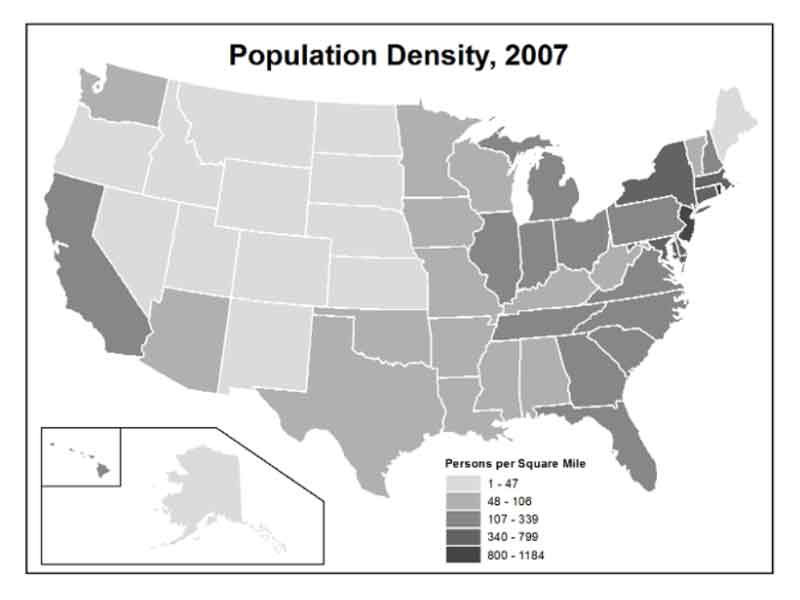
The above figure provides a good example of a choropleth map and illustrates how state median age data can be viewed in grayscale. Additionally, the map quickly offers spatial patterns associated with age and individual states that would have been nearly impossible to discern (spot) from the data alone.
A choropleth map assigns a value or range of values (called data classes) to a specific color or shading. Specifically, in the figure, the data classes were assigned to five different shades of gray. Hence, the figure has five data classes.
For best results, choropleth maps should utilize no more than eight data classes, since most individuals have a hard time distinguishing between many subtle variations in colors.
Moreover, choropleth maps best represent discrete data across defined, bounded areas. However, using too many unique values with distinct colors can cause problems. In such cases, the map becomes a geographic rainbow and loses its analytical value.
Graduated symbol maps:
Graduated symbol maps, which are similar to choropleth maps in function but use symbols (typically a circle or dot) instead of a color fill. Graduated symbol maps are highly beneficial when indicating the quantity or magnitude of a certain phenomenon in relation to geographic positioning.
These thematic maps indicate positional data and attribute values through a common symbol of varying size. As the choropleth had a rule for its colors, graduated symbol maps have a similar rule of thumb: the smaller the symbol, the smaller the value; the larger the symbol, the larger the value.
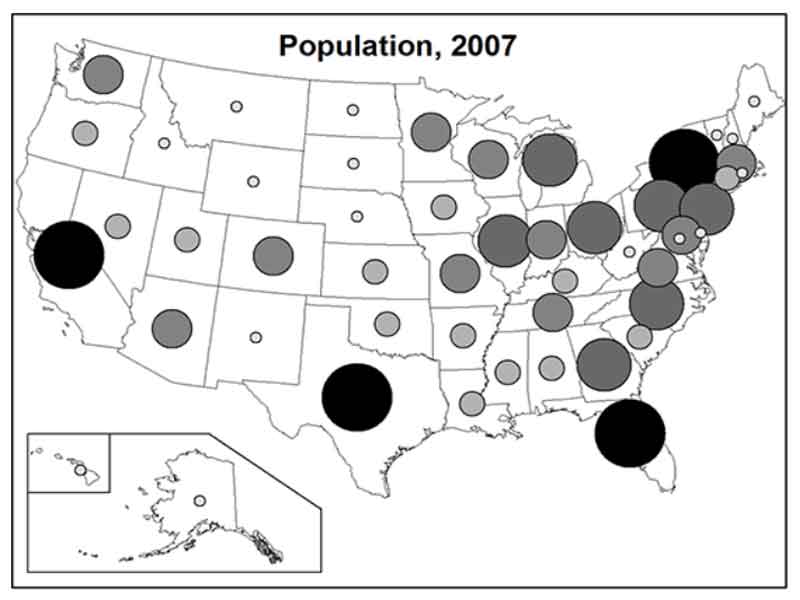
Dot density maps:
Dot density maps depict spatial densities of particular thematic elements or events. Dots on the map are always uniform in size. Unlike other thematic map types, each dot (indicator) on the map represents a defined number of thematic elements for a specific geographic position.
People sometimes find dot density maps problematic when trying to understand exact numbers or precise coverage. However, despite these few limitations, dot density maps provide an excellent way to depict attribute densities across a geographic region.
They are simple to understand and effectively represent concentration patterns and spatial trends across the entire mapped terrain.
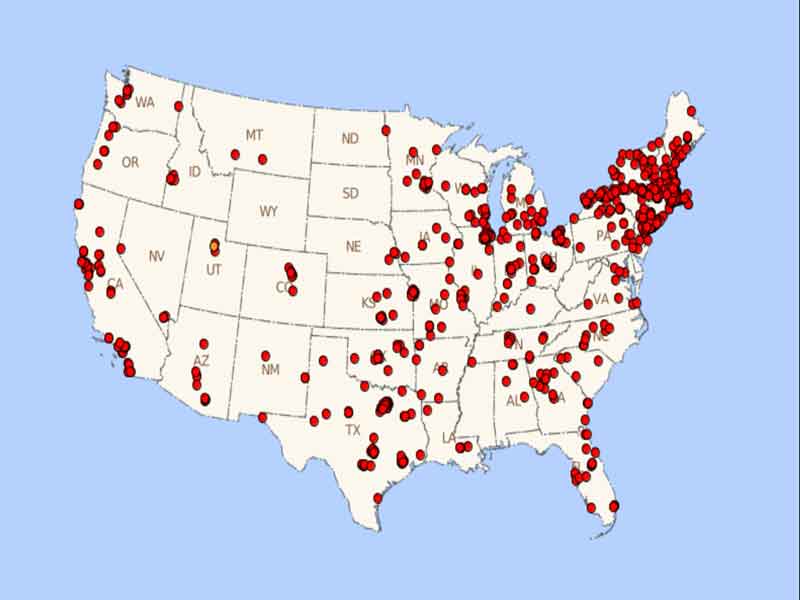
Isopleth maps:
Isopleth maps visually depict continuous or nearly continuous data in contiguous patterns of color or shading. Like choropleth maps, data classes break down values and represent them with a color ramp (or user-defined ramps).
Isopleth maps connect the same data classes together with lines that form the perimeter of the same data class areas over the geographic region. The map resulting from these areas of the same value presents a sophisticated view of the spatial patterns in the region and helps define regional trends.
Isopleth mapping can also depict a variable data feature within a thematic map or as part of a topographic map (isoline).
